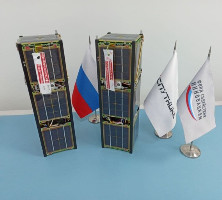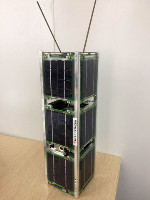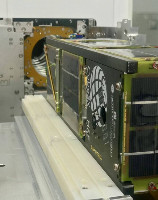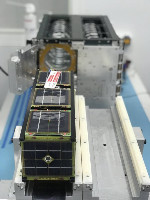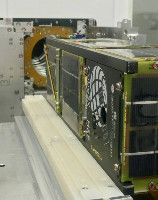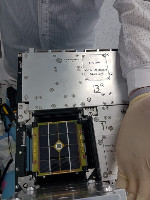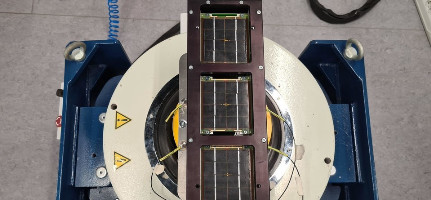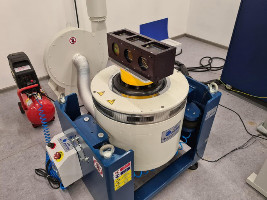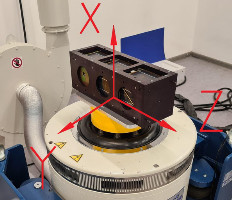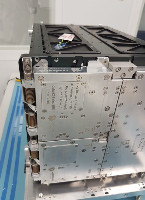| Name | CubeSX-HSE (NRU HSE, R13S, Space-PI, Space π) |
|---|---|
| Type | CubeSat |
| Units or mass | 3U |
| Mass in kg | 3.5 kg |
| Status | Operational ((News about 3 years in orbit as of 2024 March. Many SatNOGS reports, but waiting for an official confirmation as of 2021-03-27) |
| Launched | 2021-03-22 |
| NORAD ID | 47952 |
| Deployer | 12U Deployer [Aerospace Capital] |
| Launcher | Sojuz |
| Organization | Moscow Institute of Electronics and Mathematics |
| Institution | University |
| Entity type | Academic / Education |
| Country | Russia |
| Manufacturer | AIVT by Sputnix |
| Oneliner |
Educational mission with X-band transmitter. |
| Description |
The testing of all satellite control systems is carried out by students of MIEM on the basis of a previously created joint laboratory. The satellite will be equipped with a high-speed X-band transmitter.
Amateur DVB-S2 on the LEO is pretty new. It’s possible to participate in scheduled by the mission team transmissions as well as request transmission in any part of the globe via satellite flight plan by contacting the mission team. Transmissions can be EO payload data, telemetry, test signals. Different DVB-S2 modes used: MPEG TS, TCP/IP GSE/MPE/ULE. Symbol rate and other parameters can be tuned for different dish sizes and conditions, both hardware DVB-S2 receivers and SDR can be used. Amateurs can participate in scheduling and receiving these transmissions, tweaking the DVB-S2 parameters, and help with receiving more data from sats. The mission team will help with interpreting and analyzing the received data. Digipeater or similar functionality is technically possible to implement via firmware upgrade in-orbit, but only after the launch(software people didn’t have enough time before launch, unfortunately). Proposing downlinks as detailed: 435-438 MHz: TM/TC GMSK 9600 baud default, 20 kHz requested for future and experimental usage. Packet mode mostly compatible with CCSDS 131.0-B(TM SYNCHRONIZATION AND CHANNEL CODING) with some useful for smallsats amends to ASM. AX25 packet structure with amateur callsigns inside Transfer Frames. AX25 G3RUH operation also supported but disabled in favor of more FEC. 10.450-10.500 GHz: QPSK/8PSK/16APSK/32APSK roll-off 1.35 DVB-S2 1 Msym/s default, 10 MHz requested for future and experimental usage. Both MPEG TS and TCP/IP through GSE/MPE/ULE supported. |
| Sources | [1] [2] [3] |
| Photo sources | [1] [2] [3] [4] |
| COTS subsystems |
|
| Subsystems sources | [1] |
| Space photos |  
|
Last modified: 2024-05-26
